Hello my friends,
Today, I’m bringing you a beloved classic for afternoon tea in Alsace, Germany, or Austria. A recipe that highlights apples…
Here it is: Apple Strudel, the famous Austrian Dessert.
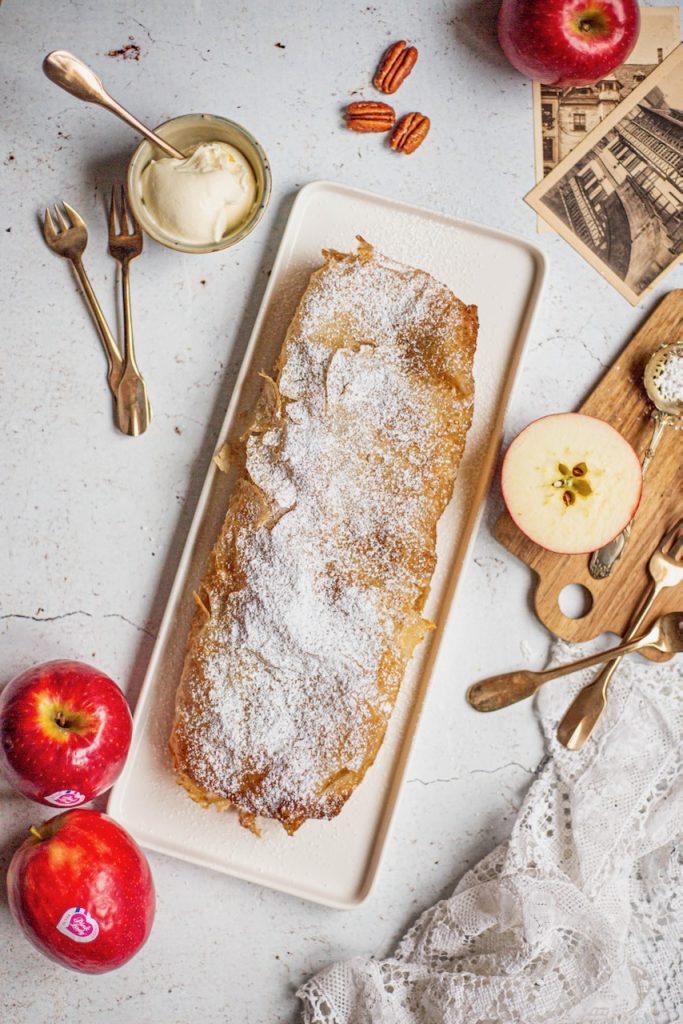
The Origins of Apple Strudel: A Journey Through Viennese History
Apple strudel, or Apfelstrudel, instantly evokes the warmth of a Viennese parlor, the delicacy of flaky pastry, and the richness of a fruity, fragrant filling. A signature dessert of Austria—and more broadly of Central Europe—apple strudel has a rich and surprisingly cosmopolitan history that spans centuries, empires, and cultures.
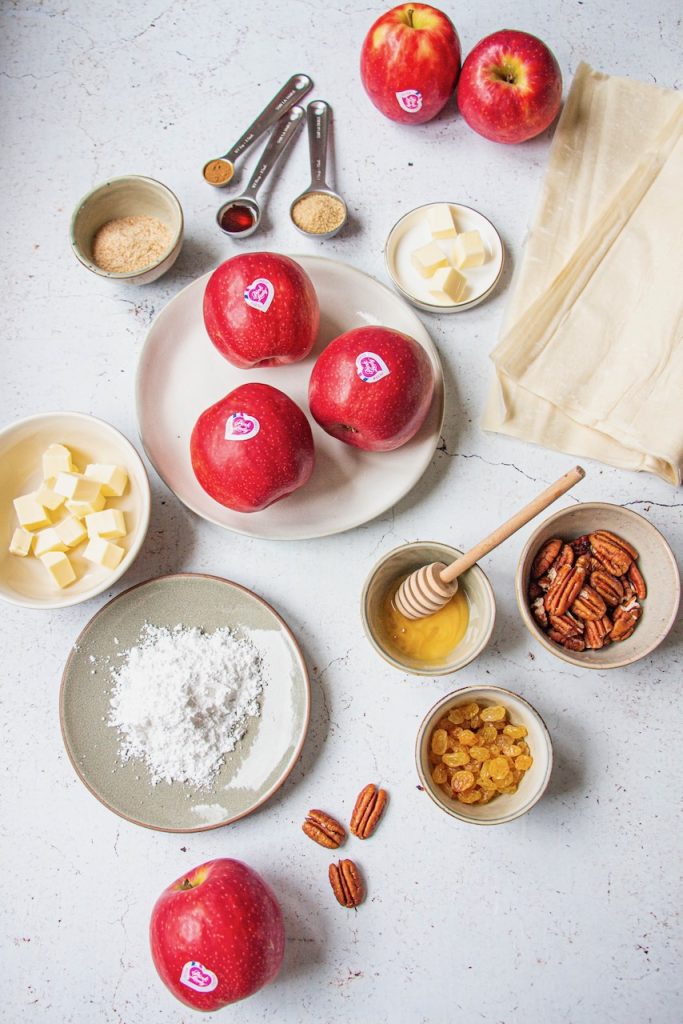
An Origin More Eastern Than You Might Think
While today strudel is associated with Austrian cuisine, its roots are actually far older and more Eastern. The word “strudel,” which means “whirl” or “swirl” in German, perfectly describes the rolled pastry movement that defines this dessert. But the concept of a thin dough filled and rolled didn’t originate in the Alps.
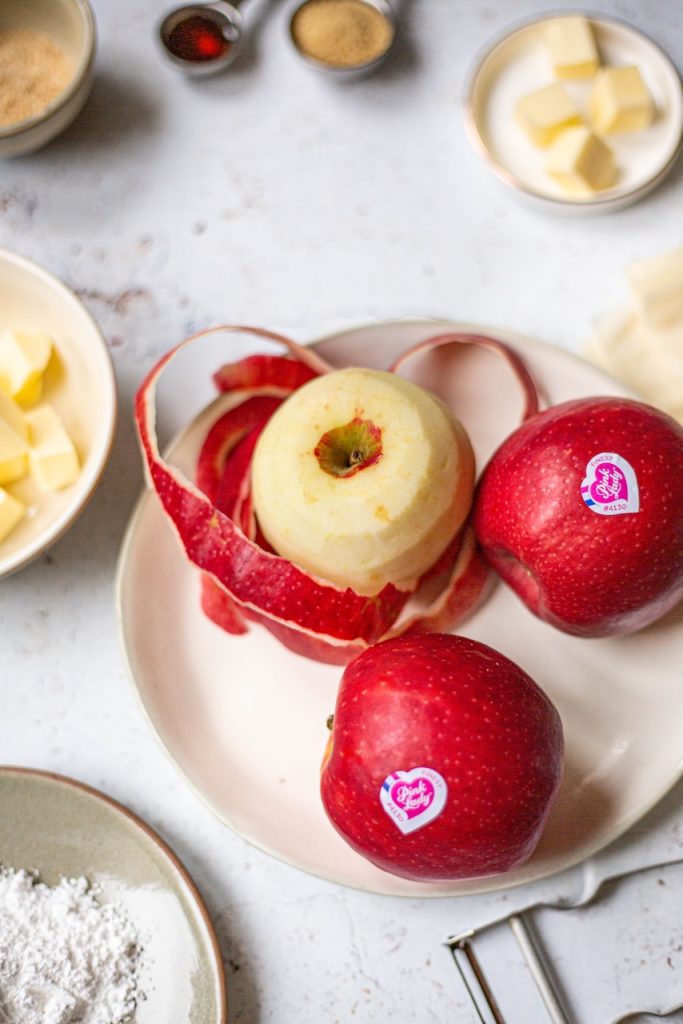
It finds its roots in Middle Eastern kitchens, notably through the tradition of delicate pastries like baklava. Introduced into Europe via the Ottoman Empire, the idea of ultra-thin dough (similar to filo pastry) traveled through the Balkans before arriving in Austria in the 15th century. This cultural transmission occurred through trade, conquest, and the Ottoman Empire’s expansion up to the gates of Vienna.

The Golden Age Under the Austro-Hungarian Empire
It was in the 18th century that the strudel as we know it today began to take shape and became a symbol of Viennese pastry. This was also when the apple version grew in popularity. Apples, widely cultivated in Central Europe, paired perfectly with exotic spices like cinnamon, which had only recently entered European kitchens.
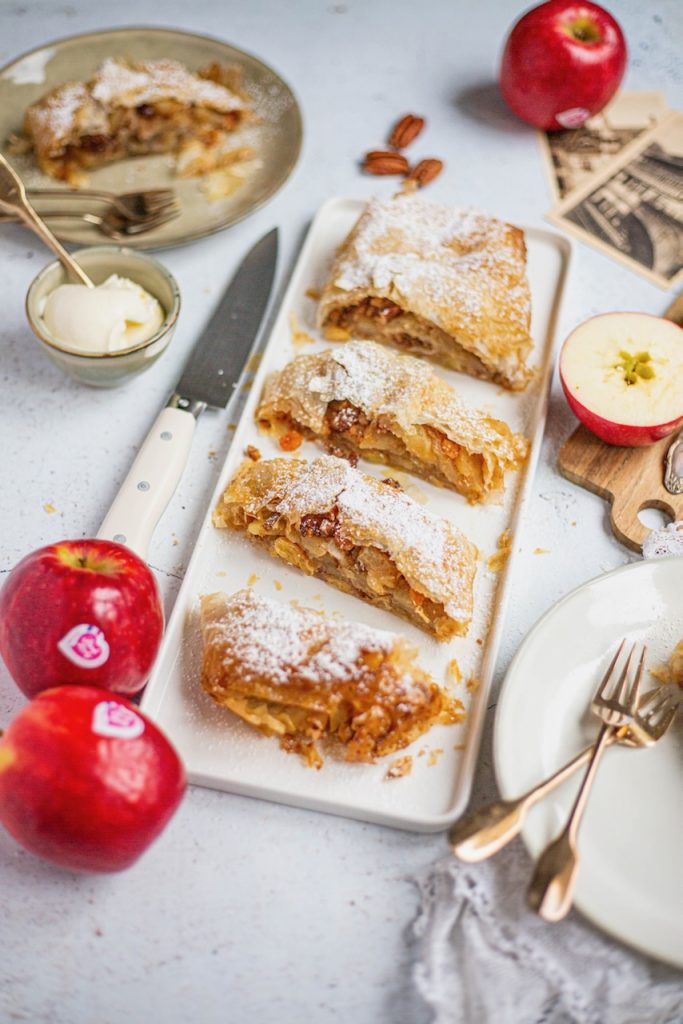
Austria, and especially Vienna, was experiencing a true gastronomic golden age. Viennese cafés—centers of culture, conversation, and refinement—made strudel a staple. It was served warm, with whipped cream or vanilla sauce, in cozy and elegant surroundings. It also became a beloved homemade specialty, carefully prepared by housewives who took pride in hand-stretching the dough until almost transparent—a technique considered a true art form.
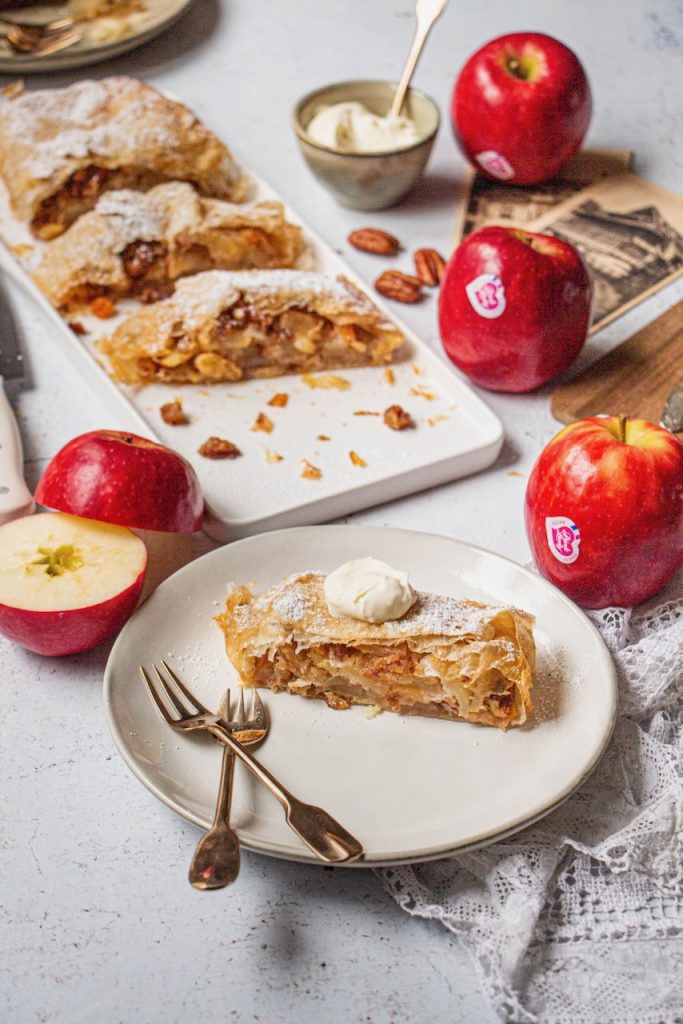
A Transnational Specialty
Over time, apple strudel spread across “Mitteleuropa”: Hungary, the Czech Republic, Slovakia, Southern Germany, as well as Poland and parts of Northern Italy. Each country—and even each family—has its own variation, adapting the fruit, spices, or dough texture to local traditions.
Today, apple strudel is recognized as a shared culinary heritage, a delicious link between the peoples of the former Austro-Hungarian Empire. It represents both cultural diversity and the universality of simple pleasures. Beyond its ingredients, it is a story of tradition, migration, and passion in every bite.
In Alsace, you’ll often find it on the table during the holiday season or at Christmas markets, served with a glass of mulled wine. Alsatian strudel reflects the warm, indulgent soul of my region.
Strudel Dough
Ingredients:
100 g butter
500 g flour
1 pinch of salt
75 g sugar
100 g lukewarm water
2 eggs
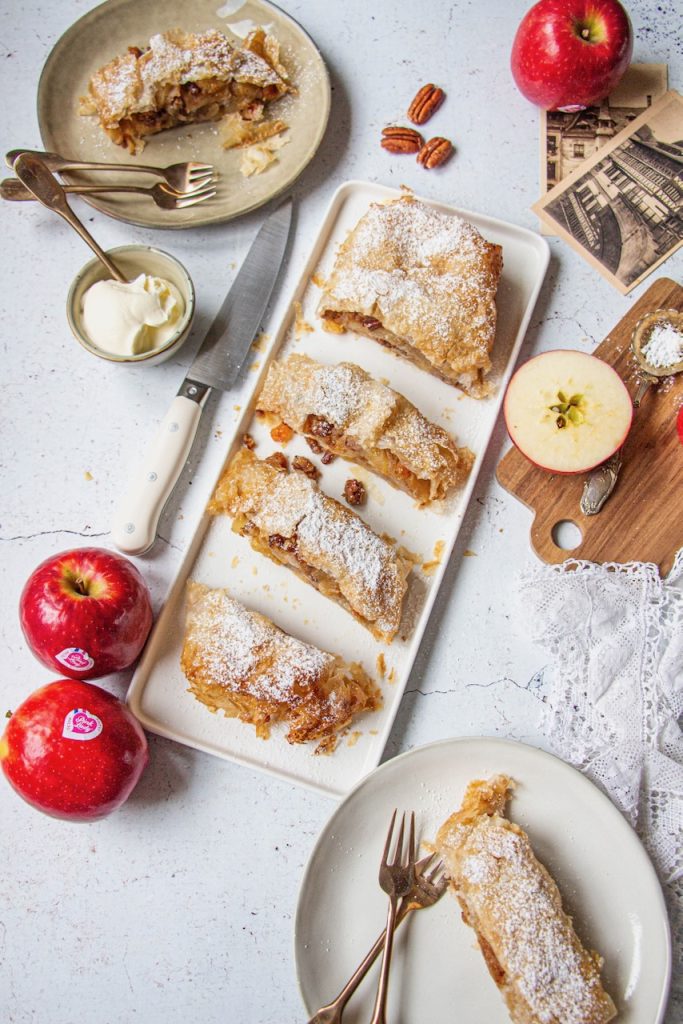
Instructions:
Melt the 100 g of butter. In a bowl, combine the flour, salt, and sugar. Add the lukewarm water, melted butter, and eggs. Knead everything by hand for about 10 minutes, until the dough is smooth, elastic, and homogeneous. Form it into a ball, cover with a clean towel, and let rest for about 30 minutes.
On a lightly floured work surface, roll out the dough into a thin rectangle. Gently stretch the dough with your oiled hands until very thin. To help you roll the strudel (once the filling is added), it’s recommended to place the stretched dough on a cloth.
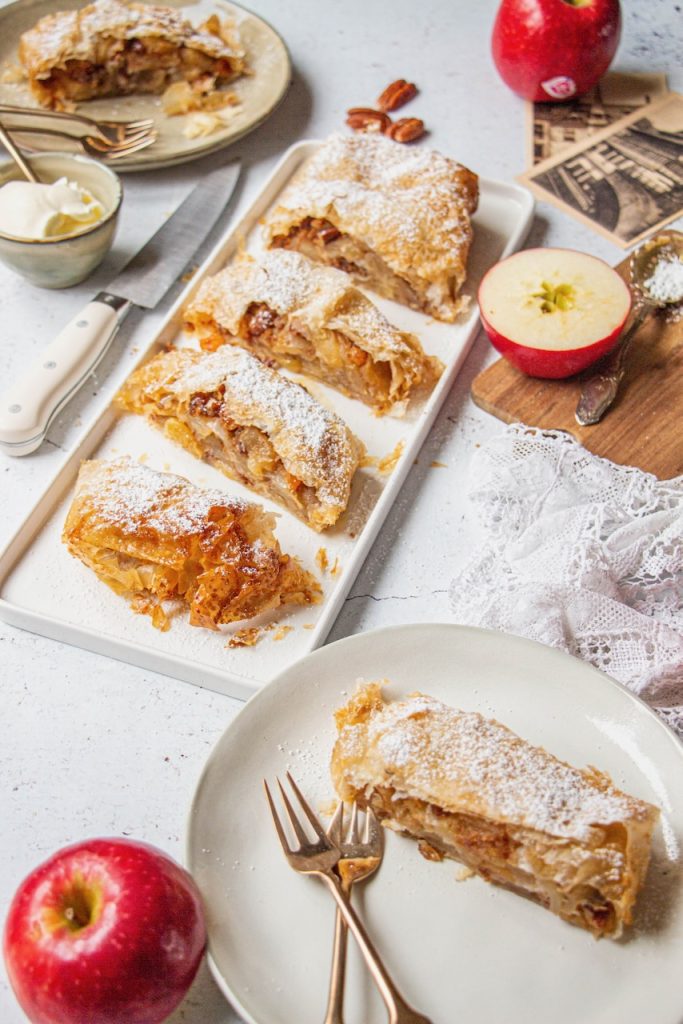
Well, I think I’ve told you everything! Apple strudel is a hugely popular snack in my house—my sweet-toothed testers are absolutely crazy about it!
Let’s go! Head to the kitchen and tie on that apron to make a delicious apple strudel!
The recipe, Chef!
Apple Strudel, the famous Austrian Dessert
Ingredients
- 3 Pink Lady apples
- 35 g raisins
- 1 tablespoon kirsch
- 20 g salted butter
- 50 g pecans
- 2 tablespoons breadcrumbs (or 20 g)
- 20 g honey
- 1/4 teaspoon ground cinnamon
- 1 teaspoon vanilla extract
- 50 g unsalted butter
- 4 sheets of filo pastry
- 3 tablespoons icing sugar (or 30 g)
- 10 g brown sugar
Instructions
Peel and core the apples, then slice them thinly. Set aside in a mixing bowl.
Mix the raisins and kirsch, microwave for 30 seconds. Let cool down.
Melt the salted butter in a small pan, add the coarsely chopped pecans and breadcrumbs. Cook for 2–3 minutes, stirring regularly. Let cool.
In a large bowl, combine the apple slices, honey, raisins, cinnamon, and the pecan/breadcrumb mixture.
Preheat your oven to 200°C.
Place a clean kitchen towel on your work surface.
Melt the 50 g of unsalted butter.
Butter one side of 3 filo sheets, then dust them with icing sugar. Layer them slightly offset on the towel to form a rectangle the size of your baking tray.
Spread the apple filling over the filo sheets, leaving a 3–4 cm margin on all sides.
Roll up your strudel by lifting the edge of the towel closest to you. Gently raise the towel to roll the strudel over itself.
Butter and sprinkle the last filo sheet with brown sugar. Flip it over and wrap the strudel in it.
Tuck the two ends of the pastry under the roll and place your strudel on the baking tray.
Bake for 10 minutes, then lower the oven to 180°C and bake for another 30 minutes.
Serve warm or cold.
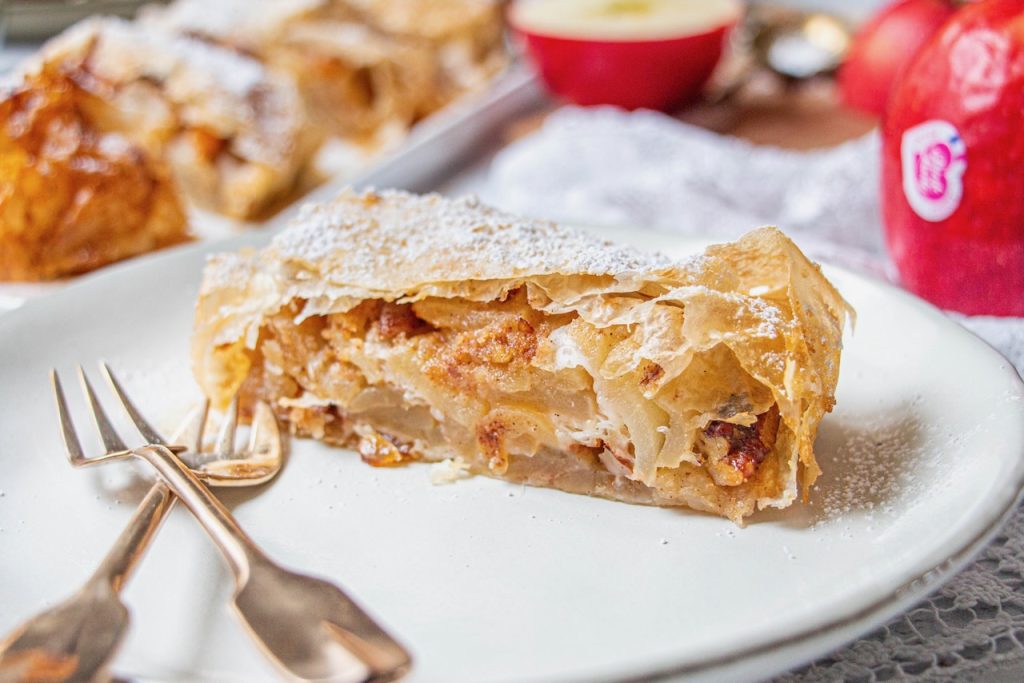

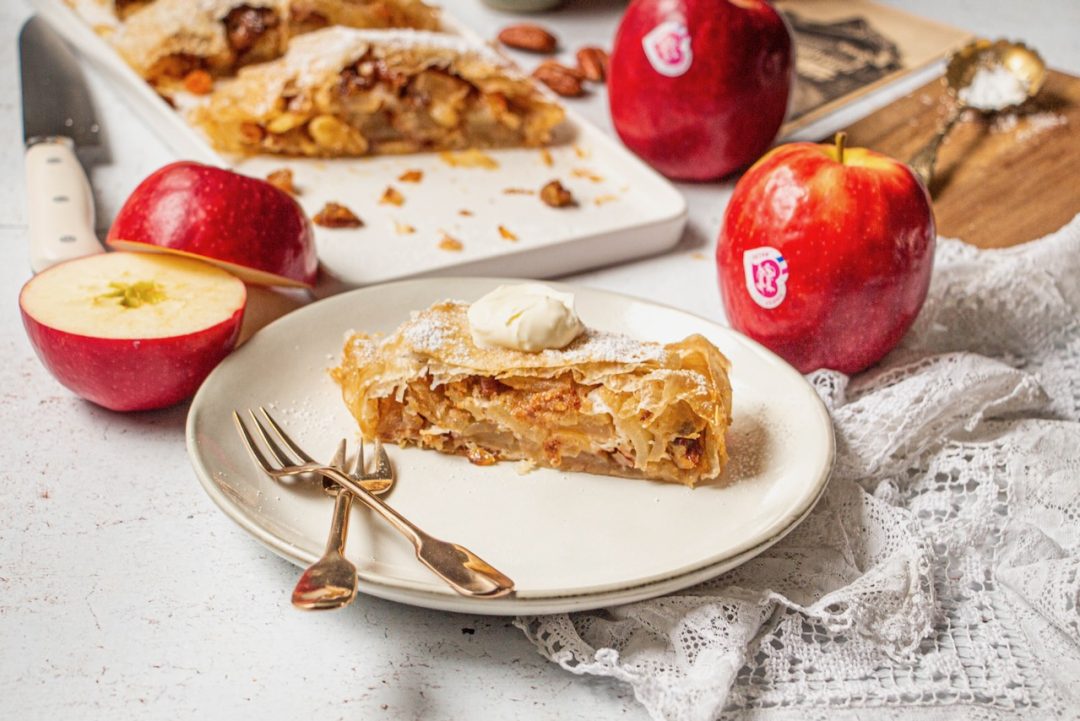
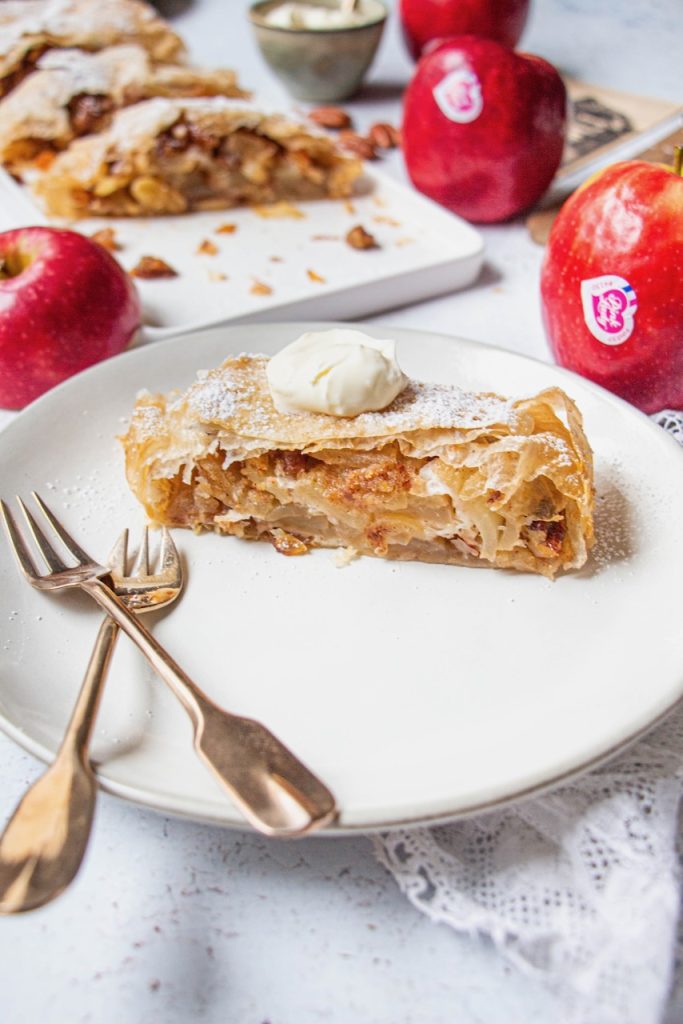
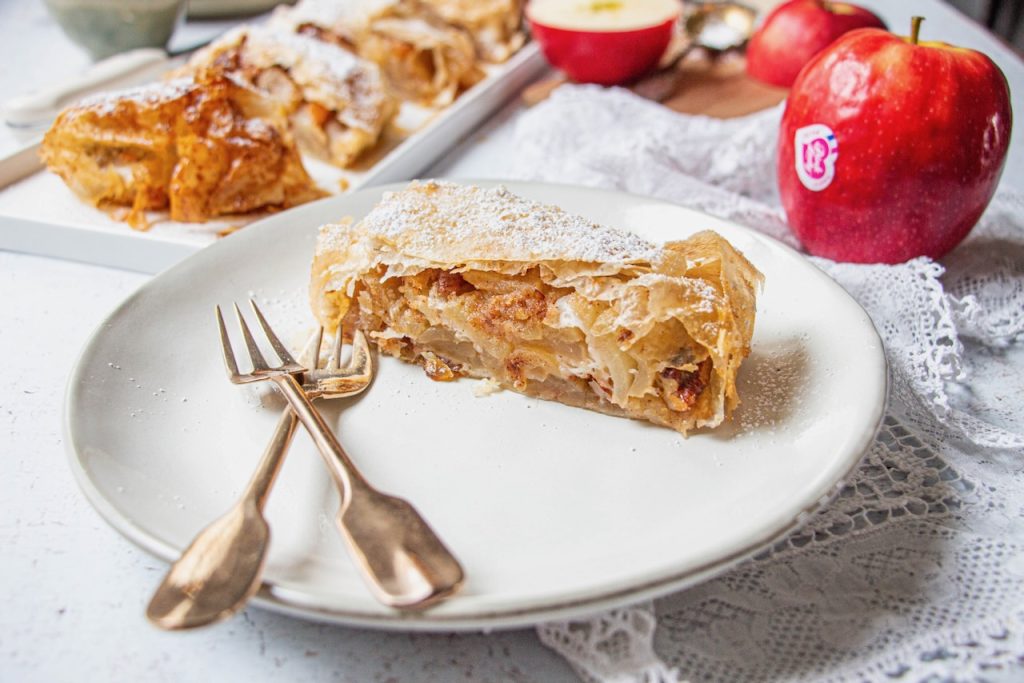
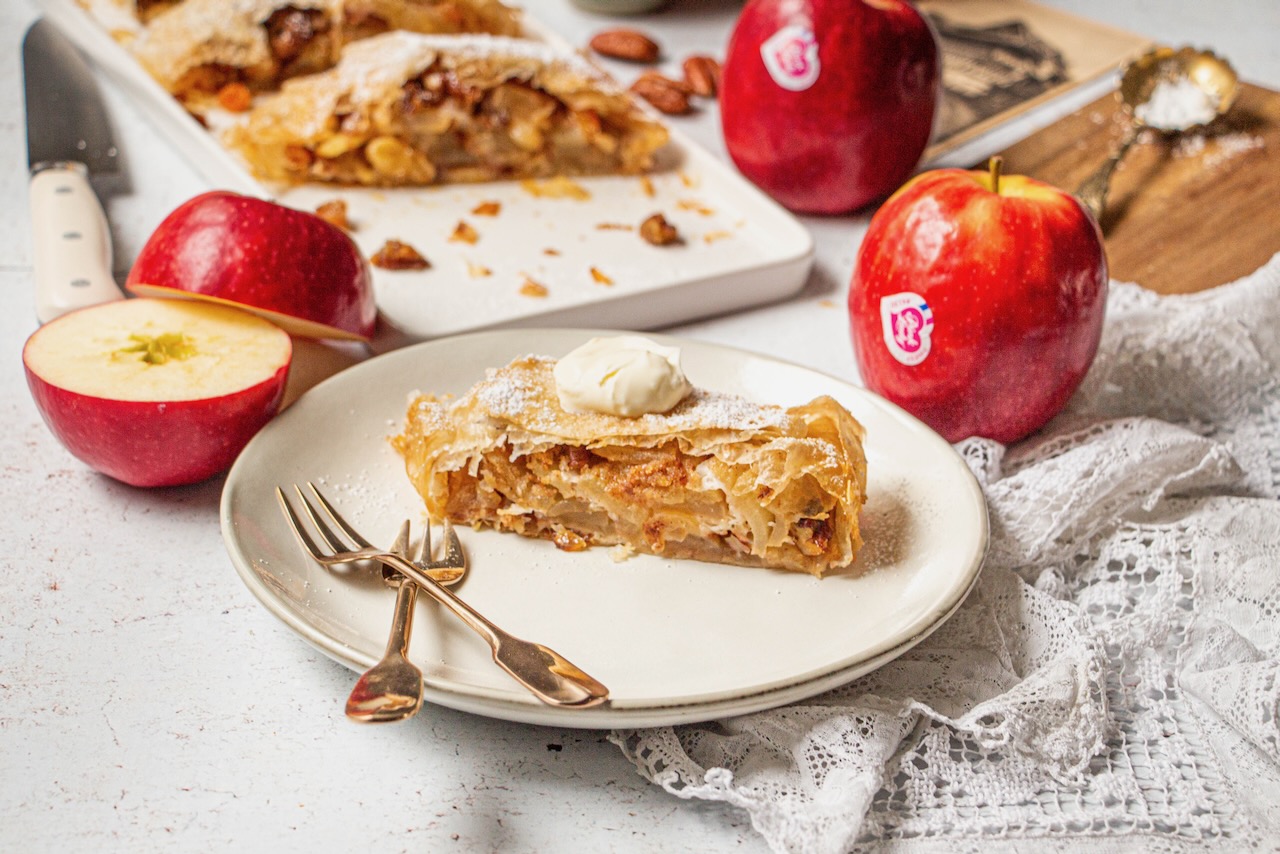

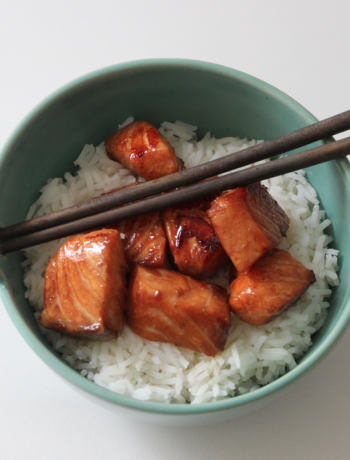

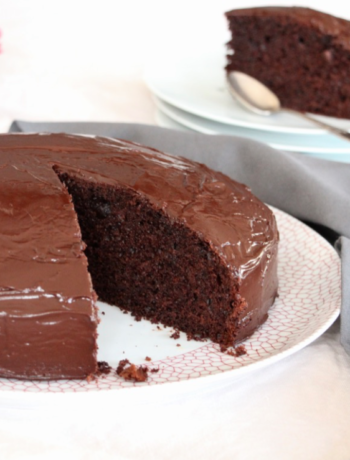
No Comments